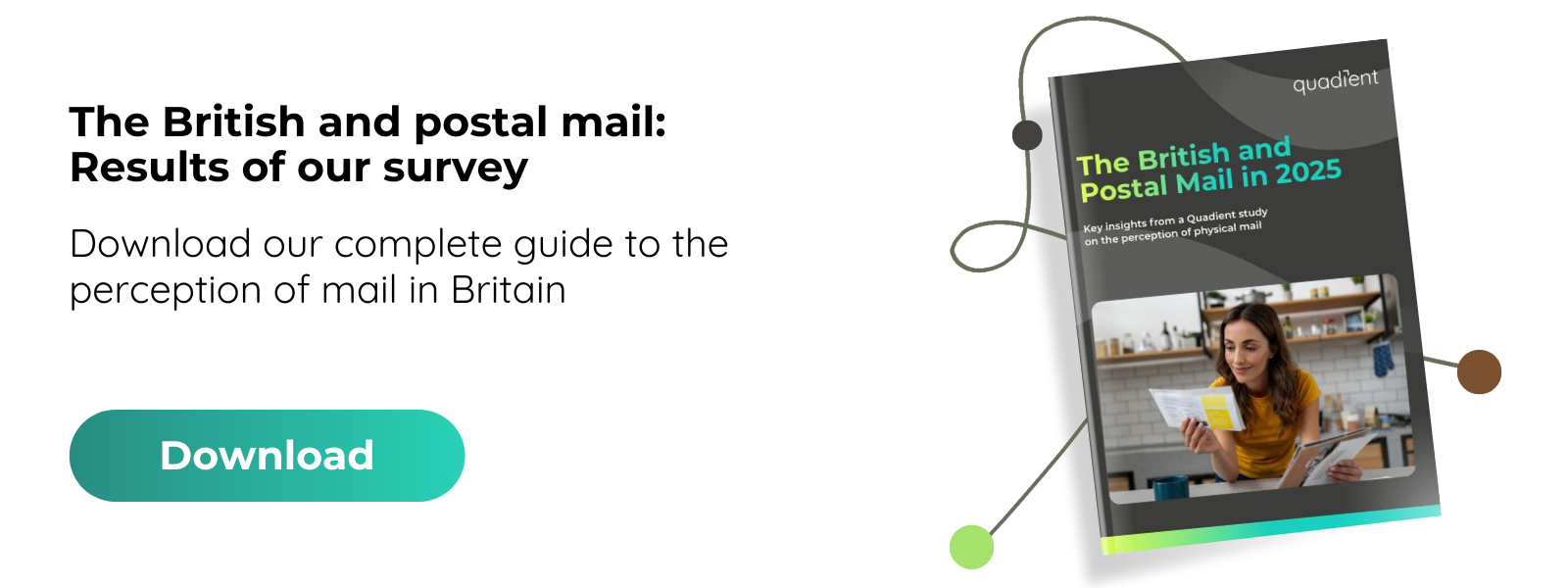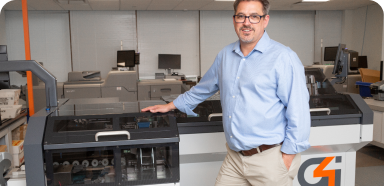
The results of our survey on the perception of postal items reveal a few surprises about the relationship between the younger generations (aged 18–34) and physical mail.
It is often buried, given up for dead, and relegated to the relics of an era that was believed to have been definitively swept away by digital technology. And yet, physical mail is still thriving. Even better, it appears to be gaining popularity among young people (aged 18–34), a demographic that, in theory, seems least receptive to its use.
Our recent mail survey of 2,000 consumers in the UK reveals an unexpected resilience of the paper medium. While personal mail volumes have dropped by 70% since 2008, consumers’ interest in and attachment to this physical channel remain strong. It's a sign of a broader search for tangibility and authenticity amid digital saturation.
The boom in notifications and the proliferation of emails and instant messages have led to communication overload. In this environment, 59% of UK consumers say they struggle to distinguish important messages from the digital noise. Paradoxically, younger people are turning to paper mail because of its perceived clarity, substance, and emotional weight. A bill, a health result, or a life insurance document gains gravity when delivered on paper—something that can be held, reviewed, and stored.
Increased confidence in paper
Far from being a nostalgic preference, paper has a strong reputation for security. Twenty-nine percent (29%) of UK consumers cite security as one of its primary strengths, viewing it as safer than digital alternatives, which are vulnerable to hacking and data breaches.
Its physical nature also matters. Thirty-six percent (36%) of respondents value the ease with which they can keep and access paper mail compared to managing digital information. For others, it’s about privacy—twenty percent (20%) feel that paper ensures greater confidentiality, and 21% say it adds significance to the messages it conveys.
One especially striking figure: 37% of 18–34-year-olds in the UK prefer to receive their bills by post. That number rises to 39% for medical results and 38% for life insurance documents. These aren't minor preferences—they point to a broader desire for permanence, clarity, and trustworthiness in critical communications.

Transgenerational transmission
While older generations remain the most attached to paper, the gap is narrowing. For example, 32% of UK consumers overall prefer to receive their bank statements by post, a figure that reflects cross-generational appeal.
Even personal letters are making a quiet return. While we don’t have a direct statistic on handwritten love letters in the UK, the same cultural forces apply: handwritten notes offer a deliberate and thoughtful alternative to fast, disposable messages. Emotion feels more sincere when written by hand, with the effort and time invested adding weight to the words.
Towards a paper renaissance?
The continued presence of mail in the digital era isn’t about clinging to the past—it reflects a real need for clarity, permanence, and meaning. As communication accelerates and content becomes interchangeable, paper is reasserting itself as a premium medium. Infrequent, yes—but impactful.
For brands and institutions, the message is clear: don’t underestimate the value of physical mail. When 59% of people struggle to recognise important messages in their inbox, a well-timed letter has more cut-through than ever. It’s not just about nostalgia. It’s about trust, credibility, and showing that what you’re saying matters. And surprisingly, it’s the younger generation that’s helping lead this return to the real.


